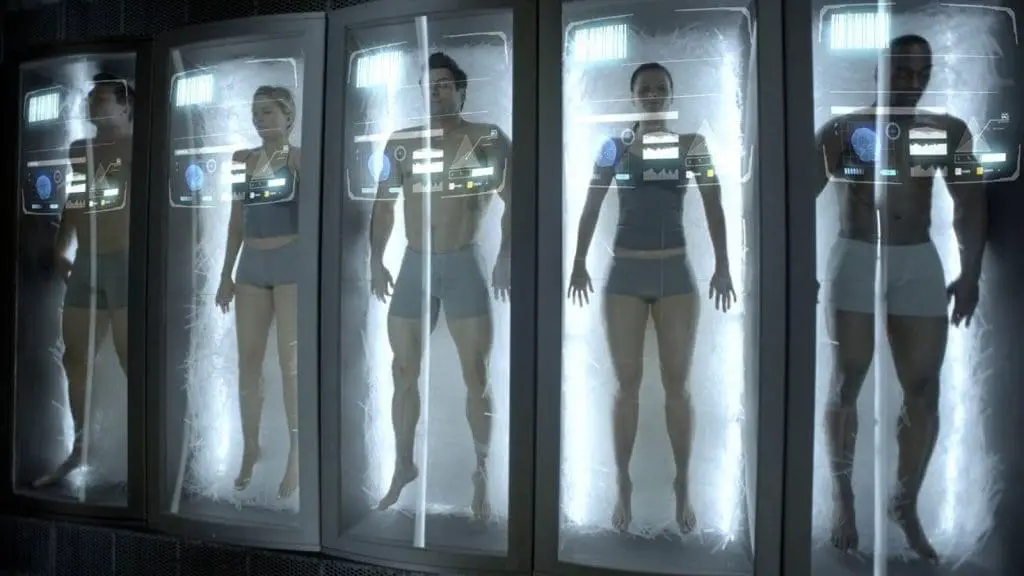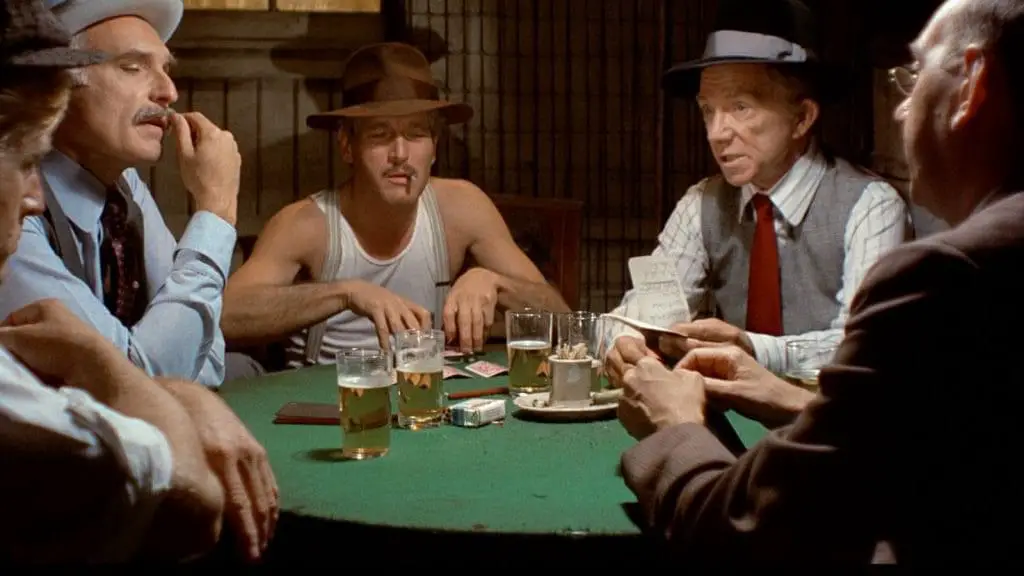
BOOTLEG FILES 357: “Where’s Charley?” (1952 musical starring Ray Bolger).
LAST SEEN: We cannot confirm the last public exhibition of this film.
AMERICAN HOME VIDEO: None.
REASON FOR BOOTLEG STATUS: It is complicated.
CHANCES OF SEEING A COMMERCIAL DVD RELEASE: Unlikely for now, but perhaps in the near future.
Today’s movie lovers know Ray Bolger for exactly one film role: the Scarecrow in the 1939 classic “The Wizard of Oz.” But during the prime of his career, Bolger was actually celebrated for another role: the frantic cross-dressing Oxford student in the 1952 musical “Where’s Charley?”, which was adapted from his 1948 Broadway success.
“Where’s Charley?” is mostly unknown today because the film has been out of circulation for roughly three decades. There has never been a home entertainment release of this film, and the only known bootleg copy circulating today is a mediocre-quality dupe that was videotaped from a San Diego television station broadcast from the late 1970s.
The absence of “Where’s Charley?” is a major shame, because the film is a nicely entertaining (albeit old-fashioned) musical comedy, and it provides Bolger with a very rare starring role that he attacks with extraordinary gusto. And even when it is fairly obvious how the film’s convoluted plot is going to be ironed out, the film still manages to throw in handfuls of delightful surprises.
“Where’s Charley?” is based on Brandon Thomas’ 1892 romp “Charley’s Aunt.” That play was among the most beloved comedies of the first part of the 20th century – and it was also among the most performed, to the point that it was fairly long in the tooth by the time Jack Benny starred in the acclaimed 1941 film version. The notion of spinning the tale yet again as a musical seemed like a bad idea, but the 1948 Broadway production had the good fortune to include a Frank Loesser score and a George Abbott book, along with Michael Kidd’s choreography. Abbott also directed the show, and the casting of the wacky, loose-limbed Ray Bolger as a singing-and-dancing “aunt” helped create a sensation.
For Bolger, “Where’s Charley?” was a career lifesaver. Although he had a long and professionally successful run in vaudeville, theater and films, Bolger was mostly stuck as supporting comedy relief. In this show, however, Bolger was given front-and-center opportunity and he responded with a dazzling display of low comedy and high-energy footwork. He also had the chance to introduce a song that became a popular standard for many years, “Once in Love with Amy.”
Although Bolger’s film work was fairly limited in the post “Oz” years, Warner Bros. was comfortable in giving him the full star treatment by having him recreate his “Where’s Charley?” success for a big screen adaptation. Even more remarkable was the studio’s approval to take the company across the Atlantic and secure locations at Oxford University for exterior sequences. At a time when very few musicals were being shot outside of a studio (let alone in another country), this was nothing short of remarkable. David Butler, a veteran director best known for helming the comedy classic “Road to Morocco,” was tapped to guide the film version.
However, Butler never quite figured out how to extract “Where’s Charley?” from its stage roots and turn it into a bona fide movie. As a result, too much of the production feels like a filmed play – the Oxford locations are rarely used to any memorable advantage, and the film’s major musical numbers are anchored in studio settings. The stage roots are confirmed in the film’s closing credits, when the cast comes out to make theatrical-style curtain calls.
But on the other hand, no one was coming to “Where’s Charley?” expecting great cinematic art. The show’s genesis in old-style farce (complete with slamming doors and mistaken identities) received a slick tune-up for this screen version, with Bolger racing wildly between his character’s regular mild personality and the excessive frivolity of his alleged Brazilian aunt. Or as New York Times critic Bosley Crowther succinctly put it: “As the loudly be-blazzered Oxford student who desperately dons the bombazine and the coquettish curls of an old maid in order to pose as his aunt, so that the young things who’ve come to visit him in Oxford may be properly chaperoned, Mr. Bolger again high-hurdles over the creaking conceits of a plot, taking them all in fast order as though they didn’t amount to a thing.”
Indeed, Bolger’s performance in “Where’s Charley?” is one of the great musical comedy performances ever put on film. His dancing is breathtaking for its eccentric originality and gravity-defying dexterity. The classic “Once in Love with Amy” number is a tour de force of romantic charm and kinetic energy, encompassing the full emotions of a smitten man who becomes a riotous superman through the power of love. (Yes, Bolger was 48 when the film was shot – but he certainly did not act like the stereotypical middle-aged man!)
Of course, the problem with having a powerhouse performance at the center of the film is the void that is created when the star is off screen. “Where’s Charley?” loses steam when Bolger is out of sight, particularly in the lengthy but dreary “Pernambuco” comic ballet sequence. Yet the film version tried to minimize the time that Bolger is absent, to the point of cutting several ballads from the show that were meant to highlight the secondary characters.
“Where’s Charley” was a major hit when it opened in the spring of 1952, and Warner Bros. rewarded its star by casting him in a starring role opposite Doris Day in “April in Paris.” And that, sadly, was the end of Bolger’s star turn in films. He would continue performing for the next two decades, mostly on stage and television, and his subsequent film parts were brief and limited. Late in his career, Bolger showed his viability as a dramatic actor with memorable parts as the elderly vaudevillian in the made-for-television version of “The Entertainer” (1975) and the unsympathetic monsignor in Stanley Kramer’s “The Runner Stumbles” (1979), but it was too late to reanimate his career with a new non-musical direction. When he passed away in 1987, every obituary obsessed on “The Wizard of Oz,” while “Where’s Charley?” was mostly mentioned in brief passing.
So where is “Where’s Charley?” today? It appears that Loesser’s widow, Jo Sullivan, hated the film and successfully yanked it out of circulation once she was able to regain the rights to the property. This is fairly strange, considering that films based on other Loesser musicals, particularly “Guys and Dolls” and “How to Succeed in Business Without Really Trying,” are woefully inferior to “Where’s Charley?”
In the interim, Bolger fans can catch the “Once in Love with Amy” sequence in an unauthorized and somewhat poor quality clip on YouTube. At least one collector-to-collector service is selling the crummy bootleg copy, so the seriously curious can enjoy the film. However, I genuinely hope that “Where’s Charley?” will be able to return in a fully restored and properly promoted DVD release – keeping this gem out of sight is a genuine error.
IMPORTANT NOTICE: The unauthorized duplication and distribution of copyright-protected material, either for crass commercial purposes or profit-free s***s and giggles, is not something that the entertainment industry appreciates. On occasion, law enforcement personnel boost their arrest quotas by collaring cheery cinephiles engaged in such activities. So if you are going to copy and distribute bootleg videos and DVDs, a word to the wise: don’t get caught. Oddly, the purchase and ownership of bootleg videos is perfectly legal. Go figure!


Bought the LP bootleg at a store that insisted it did not traffic in boots, even with shelves full of them. I’m eternally grateful to that long gone shop, Standard Records and HiFi in Seattle. I am grateful as well to my mother pulling me out of school to watch this on television in the middle of the day. Thank you for clarifying what the what is with this film. I would love to see it again: so little of Bolger’s amazing dance career is on film (and there is a lot available). I bought Disney’s Babes in Toyland simply for his musical numbers. He is not in his prime, but he still sticks the kick turn.
Jo Sullivan died this year (2019). Already, there’s a Most Happy Fella revival in the works.
A gal can hope.
I loved the movie and wish it were on DVD. Too bad one person can prevent many people from seeing such a wonderful film for a selfish reason.